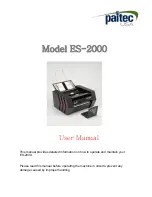
User Manual
V1.0 2021 Copyright Safewaze
14
Store Safewaze FBH’s in a cool, dry, clean environment out of direct sunlight. Avoid areas where chemical vapors may
exist. Thoroughly inspect the FBH after any period of extended storage.
Remove the Safewaze FBH from use if the FBH has been subjected to fall arrest forces or inspection reveals an unsafe or
defective condition. If unsafe or defective condition is found, dispose of the FBH as recommended in section 18.5.
Cleaning procedures for Safewaze FBH’s are as follows:
If webbing becomes soiled or requires cleaning, use water and a mild soap solution.
Clean labels to maintain legibility.
Hang FBH and allow to fully dry before using. Do not dry the harness in a commercial type dryer, or use heated air to dry.
Inspect the webbing of the harness for cuts, frays, broken stitching, damage from heat or chemical exposure, or other
defects related to excessive wear or abrasion.
Inspect the harness for indications that it has been exposed to fall arrest forces. All Safewaze FBH’s are equipped with
two load indicators (one on each back torso strap). If either of the load indicators have been deployed (See Figure 7)
remove the FBH from service and dispose of as described in Section 15.5.
Inspect FBH labeling to ensure that they are legible and present on the harness. If any labeling is illegible, or missing,
remove the FBH from service.
Figure 13 shows examples of equipment damage. Equipment inspectors must be trained to look for damage to
components of the FBH as illustrated in Figure 13, as well as other damage that may occur. If inspection reveals an
unsafe or defective condition remove the FBH from service.
In addtion to inspection prior to each use, the FBH must be inspected annually by a competent person other than
the user
. Severe or harsh environments may require more frequent inspections.
Cut
Frayed
Heavily Soiled
Welding Burns
17.1 MAINTENANCE
17.2 CLEANING
17.3 STORAGE
18.0 INSPECTION
18.1 BEFORE EACH USE
18.2 INSPECTION FREQUENCY
18.3 UNSAFE OR DEFECTIVE CONDITIONS
FIGURE 13 - EXAMPLES OF EQUIPMENT DAMAGE





































